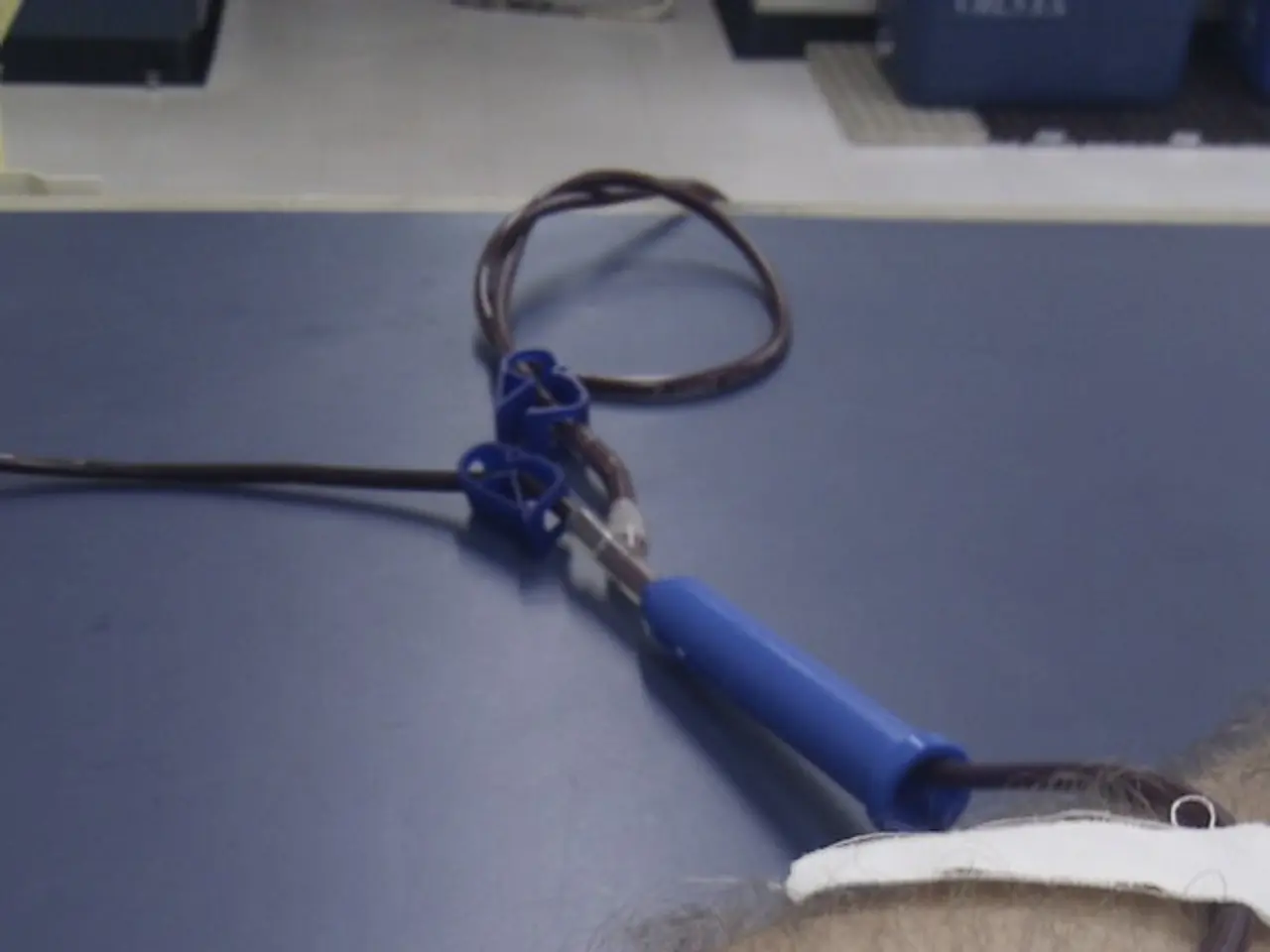Lactated Ringer's Solution: Its Applications, Adverse Reactions, and Additional Information
Lactated Ringer's (LR) solution and normal saline are two common intravenous fluids used to restore the balance of fluids and electrolytes in the body. While they share some similarities, their chemical content, physiological effects, and clinical use differ significantly.
Chemical Content
Lactated Ringer's solution contains sodium, chloride, potassium, calcium, and lactate, making it a balanced crystalloid solution that closely mimics plasma electrolyte composition. On the other hand, normal saline (0.9% NaCl) contains only sodium and chloride, with no potassium, calcium, or buffers, making it a non-balanced crystalloid.
Effects on the Body
LR is more physiologically balanced, offering a near-neutral pH and its lactate acting as a buffer, metabolized into bicarbonate, helping prevent acidosis. Normal saline, however, has a higher chloride concentration that can cause hyperchloremic metabolic acidosis and may negatively affect kidney function at high volumes or in susceptible patients.
Clinical Settings and Use
LR is often preferred in scenarios requiring balanced fluids, such as trauma resuscitation, surgery, and when avoiding acid-base disturbance is desired. Normal saline, on the other hand, is preferred when LR is contraindicated or inappropriate, such as in patients at risk of hyperkalemia, those needing fluid compatible with blood products, situations requiring rapid volume expansion without buffer effects, or some protocols that substitute LR for saline during shortages.
Summary Table
| Feature | Lactated Ringer's | Normal Saline (0.9% NaCl) | |-----------------------------|------------------------------------------|-------------------------------------| | Chemical composition | Na, Cl, K, Ca, Lactate (buffer) | Na, Cl only | | pH | ~7.39 (more physiologic) | ~5.5 (acidic tendency) | | Acid-base effect | Buffers acidosis (lactate metabolism) | Can cause hyperchloremic acidosis | | Electrolyte balance | Closer to plasma | High chloride | | Cytotoxicity at high conc. | Possible (≥ 60%) | None | | Preferred use | Trauma, surgery, balanced resuscitation | Hyperkalemia risk, blood transfusion compatibility, rapid volume | | Clinical outcomes | Better survival in hemorrhage models | Similar outcomes in general ICU trials[3]|
In summary, LR offers a balanced electrolytic and acid-base profile with clinical advantages in many resuscitation settings, while saline remains useful when calcium or potassium avoidance is critical, or in blood transfusion scenarios. Recent large trials suggest no major difference in key outcomes for critically ill hospitalized patients, so the choice often depends on specific patient factors and institutional protocols.
It's important to note that LR is not typically administered for people undergoing blood transfusions due to potential interactions with certain blood medications. The electric pump method allows for automatic delivery of the correct dosage of LR, but problems with fluid infusion, such as faulty devices or software/electrical issues, are commonly associated with electric pump use. Side effects due to LR are rare, but can include allergic reactions, discoloration or streaking, and infection at the injection site. LR has an alkalizing effect on the body and remains inside the body for a shorter period compared to saline.
- In health systems, the choice between Lactated Ringer's (LR) solution and normal saline often depends on the specific medical-conditions of patients and institutional protocols, as both fluids have different effects on health-and-wellness.
- While Lactated Ringer's solution is a balanced crystalloid solution with a near-neutral pH and lactate acting as a buffer, normal saline, on the other hand, has a higher chloride concentration that can cause metabolic acidosis and affect kidney function in certain situations.
- The use of other medical procedures, such as therapies-and-treatments like surgery or trauma resuscitation, may benefit from the balanced electrolyte composition and acid-base profile offered by LR, making it a preferred choice in these clinical settings compared to normal saline.




